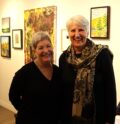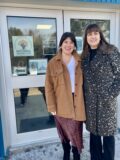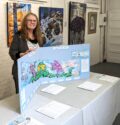Commentary
Community is our greatest resource
May 25, 2017
There is an old African proverb:
If you want to go fast, go alone.
If you want to go far, go together.
The idea of fostering interdependency goes against the grain for most of us — because we live in a culture that celebrates “individualism.” We are taught to be independent, self-reliant and self-motivated. We honour our heroes with trophies and annual awards for outstanding achievements.
We are programmed to attach personal credit to success because, we are told, success or failure depends upon the effort one makes. That real success is the combination of natural ability, intelligence and education. It’s all about working hard and making the most of our special talents and, possibly, having good luck.
Think of Olympic medal winners. As they take to the podium, we admire their hard work and imagine their sense of triumph. We see them as finely tuned specimens of human performance, people who have inherited a tendency for athletics, gifted with genetic abilities.
There is no doubt that an Olympic athlete must possess a great deal of natural talent but, at some point, it had to have been spotted by someone else. Scores of coaches, teachers and trainers, along with family and friends, have honed and nurtured this athlete, in preparation for the medal ceremony. A medal winner is actually the product of a great deal of social interaction but that’s not what most of us applaud.
The reality is that we all rely upon others. The only reason we speak, read and write is because some else taught us how to do it. Effort is something that we learn because teachers, parents, mentors or managers encourage us to keep setting higher goals. Creative people develop their skills bouncing ideas off others and scientific advancements are often discovered by teams.
And luck? Studies have shown that people spend more time with others increase the probability of making the most of those connections. We’ve all heard that people find jobs because of who they know, not what they know.
One study reported that “more diverse social networks were associated with greater resistance to upper respiratory illness.” Others show that schools are move effective when parents and other local citizens become involved. The more dedicated the teacher, the higher the students’ test scores. Barn-raising was an early illustration of the value of social capital in action.
This kind of community building was recently demonstrated by “Knittervention.” Hospice North Hastings brought together a small group of older adults who shared an interest in fabric art. The group met regularly, in the lobby of Bancroft’s Village Playhouse.
Through the bitter winter months, the group warmly connected. They worked together, sharing their gifts, teaching others, learning and laughing.
As time passed, a plan emerged and the project grew. “Knittervention” gathered donations of scrap yarn from the community, keeping their goal a guarded secret.
In the overnight hours of May 11, the collection was stealthily installed to yarn-bomb Bancroft’s Village Playhouse. In the true spirit of community, the group says the display is their way of sharing their joy and giving us all something to smile about. That’s exactly what happens when community comes together. We all win.

















